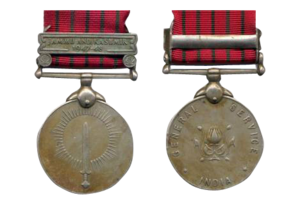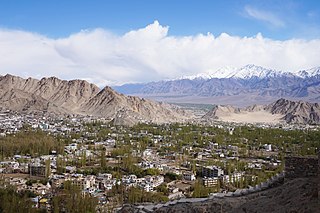
Leh district is a district in Indian-administered Ladakh in the disputed Kashmir-region. Ladakh is an Indian-administered union territory. With an area of 45,110 km2, it is the second largest district in the country, second only to Kutch. It is bounded on the north by Gilgit-Baltistan's Kharmang and Ghanche districts and Xinjiang's Kashgar Prefecture and Hotan Prefecture, to which it connects via the historic Karakoram Pass. Aksai Chin and Tibet are to the east, Kargil district to the west, and Lahul and Spiti to the south. The district headquarters is in Leh. It lies between 32 and 36 degree north latitude and 75 to 80 degree east longitude.

Udhampur is an administrative district in the Jammu division of Indian-administered Jammu and Kashmir in the disputed Kashmir region. Covering an area of 4,550 square kilometres (1,760 sq mi) in the Himalayan mountains, the district has its headquarters in the town of Udhampur. The Northern Command headquarters of the Indian Army is located in the district.
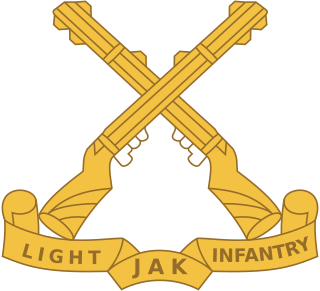
The Jammu and Kashmir Light Infantry is an infantry regiment of the Indian Army. The regimental center is in Srinagar's Airport Complex at Awantipora with a winter setup near Jammu. Its regimental insignia consists of a pair of crossed rifles. The regiment mostly consists of volunteers from the state of Jammu & Kashmir and ethnic groups from the state. The Jammu and Kashmir Light Infantry is considered to be one of the most decorated regiment of the Indian army having won 1 Param Veer Chakra and 3 Ashok Chakra. Naib Subedar Chuni Lal of the 8th battalion Jammu and Kashmir Light Infantry is one of the most decorated personnel of the Indian Army.

Lieutenant General Kunhiraman Palat Candeth, PVSM was a senior officer in the Indian Army who played a commanding role in the Liberation of Goa from Portuguese control in 1961, and briefly served as the Military Governor of Goa, Daman and Diu.
Colonel Chewang Rinchen MVC & Bar, SM was a highly decorated officer in the Indian Army from the Union territory of Ladakh. He was the youngest ever recipient of the Maha Vir Chakra, the second highest Indian gallantry decoration, for his role in the defence of Ladakh in the First Kashmir War. He received the Maha Vir Chakra for a second time after Indo-Pakistani War of 1971, for his role in the conquest of the Turtuk and Tyakshi, in what came to be known as the Battle of Turtuk. He was one of only six Indian service personnel to have the Maha Vir Chakra twice. He was awarded a Sena Medal for gallantry in the 1962 India-China War. and Mention in dispatches for gallantry in the Indo-Pakistani War of 1965
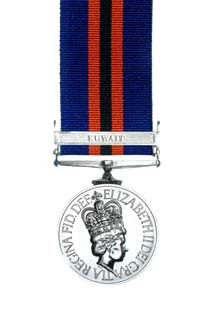
The New Zealand General Service Medal 1992 (Warlike) (NZGSM 1992) is a New Zealand campaign medal, authorised in 1992, for award to New Zealanders who have served in warlike operations for which no separate New Zealand or British Commonwealth campaign medal was issued.
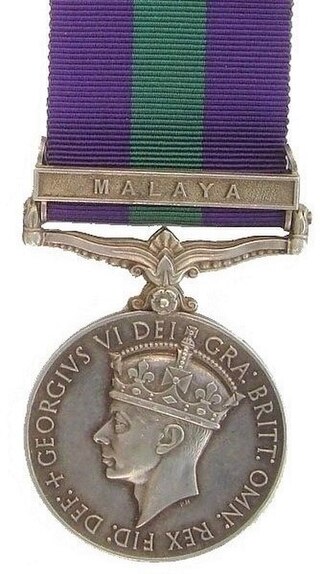
The General Service Medal was instituted to recognise service in minor Army and Royal Air Force operations for which no separate medal was intended. Local forces, including police, qualified for many of the clasps, as could units of the Indian Army prior to 1947.

The General Service Medal, is a campaign medal of the United Kingdom introduced in 1962 to replace both the General Service Medal (1918), as awarded to the Army and RAF, and the Naval General Service Medal (1915). The 1962 GSM was awarded until 2007, when it was replaced by the Operational Service Medal. In 2015 the General Service Medal (2008) was introduced.

Lieutenant General Sagat Singh, PVSM was a General Officer in the Indian Army, notable for his participation in liberation of Goa and later in Indo-Pakistani war of 1971. He held many commands and staff appointments throughout his career.

The following outline is provided as an overview of, and topical guide to, India:
The Western Air Command (WAC) is the regional command of Indian Air Force headquartered in New Delhi. It is the largest and most important Air Command of the IAF, comprising sixteen Air Force Bases (AFBs), and is responsible for aerial defence of North India.

The XIV Corps or The Fire and Fury Corps is a corps of the Indian Army. It is the Army's Udhampur-based part of the Northern Command. The 14th Corps forms a military deployment in the Kargil-Leh area guarding the frontiers with China and Pakistan. It also guards the Siachen Glacier.

Western Command is a Command-level formation of the Indian Army. It was formed in 1920. It was disbanded following its demotion to an independent district and eventual merge with Northern Command to form the North-western Army. It was re-raised in 1947 following the transfer of Northern Command HQ to Pakistan. Until 1972, it was responsible for India's border with Pakistan in the North and West and the Chinese border in the North. The Command HQ is in Chandimandir, Haryana, about 5 km east of Chandigarh.
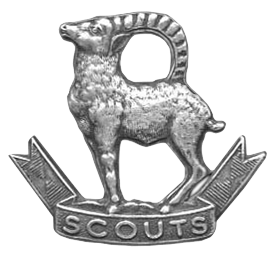
The Ladakh Scouts is an infantry regiment of the Indian Army, nicknamed as the "Snow Warriors" or "Snow Leopards". The regiment specializes in mountain warfare, and its primary role is to guard India's borders in the high altitudes of the Union Territory of Ladakh.
Secession in India typically refers to state secession, which is the withdrawal of one or more states from the Republic of India. Whereas, some have wanted a separate state, union territory or an autonomous administrative division within India. Many separatist movements exist with thousands of members, however, some have low local support and high voter participation in democratic elections. However, at the same time, demanding separate statehood within under the administration of Indian union from an existing state can lead to criminal charges under secession law in India. India is described as an ‘Union of States’ in Article 1 of the Indian constitution I.e "Indestructible nation of destructible states" by its father of constitution Dr. Bhimrao Ramji Ambedkar where a state or Union territory of India cannot secede from India by any means and the Central Government has more powers than the respective state governments and can forcefully change the names and boundaries of the states without their permission at any time when needed for self interest and for the maintenance of integrity.
20th Lancers is an armoured regiment in the Armoured Corps of the Indian Army. The regiment distinguished itself in operations with its defence of Chhamb in Jammu and Kashmir during the 1965 Indo-Pakistan War and won one Maha Vir Chakra. It has provided one Chief of Army Staff and two Army Commanders.
Manohar Lal Chibber was an Indian Army officer and writer, known for his involvement in the Siachen conflict of 1986. He held the position of a Lieutenant General in the Indian Army and is a recipient of the Ati Vishisht Seva Medal and the Param Vishisht Seva Medal.
The Sainya Seva Medal is a medal of the Indian Armed Forces. The medal is awarded in recognition of non-operational service under conditions of hardship and severe climate in specified areas.
3 Medium Regiment is part of the Regiment of Artillery of the Indian Army.
Tamgha-e-Diffa (Urdu: تمغہِ دفاع, lit. '' is a Pakistani general campaign medal and is awarded along with a clasp to all ranks who take part in minor operations or campaigns within a laid down period, dates and prescribed qualifying area.
